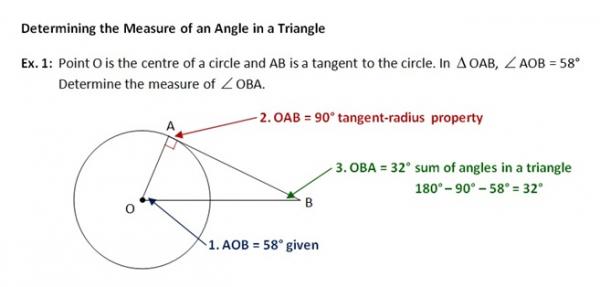The Worked Example Effect
When novices engage in conventional problem solving, they use means-ends analysis which imposes a high cognitive load directed towards managing that process.
Presenting an emphasis on study of worked examples guides a learner's attention to the features of recognising the problem type and on the forward-working solution associated with it. Consequently, study of worked examples is more effective in promoting learning of how to solve problems than is conventional problem solving.
Problems should be created in pairs. The first of each pair should be presented as a worked example solution to that problem type. Learners should be informed of the paired nature of problems and that study of the worked example will provide a template for the solution to the following problem.
The second of the pairing should be presented as a conventional problem for learners to solve. Study of the initial worked example promotes the acquisition of a schema for recognition and solution, which is then deployed in the second of the pairing.
Worked examples are presented to learners to show them directly, step by step, the procedures required to solve different problem types.
Learners should be instructed to study the worked examples to learn:
- how to identify problems as being of a particular type
- the steps needed to solve each particular type, and
- how to perform each step without error.
Studying worked examples imposes a low level of cognitive load because attention need only be given to two problem states at a time and the rule operator that links them.
A successful method for placing emphasis on worked examples is to present them with conventional problems in an alternating sequence (example type A, problem type A, example type B, problem type B and so on). Students are informed of the paired nature of the material and instructed to study each example carefully because they will not be allowed to look back at it once they begin the associated problem.
Students thus focus their attention on the problem type and the associated steps to solution (the schemas). In solving the associated conventional problem, they are testing themselves to determine if they have learnt the procedure. This may be a more genuine form of "practice problem solving".
Following the numbered sequence, first study the worked example, then cover it, and attempt to solve the associated problem.
For each of the following, solve for 'a'.
1. c ( a + b ) = f 1. g ( a + m ) = k
( a + b ) = f / c
a = f / c - b
2. ac + e = g 2. af + p = s
ac = g - e
a = (g - e) / c
3. f ( a + h ) = m 3. s ( a + k ) = w
( a + h ) = m/ f
a = m/ f - h
4. ap + y = g 4. ah + d = y
ap = g - y
a = (g - y) / p

Worked examples for solving geometry problems need to integrate the working into the geometry diagram otherwise split attention effects will occur and reduce their effectiveness.
The steps have been numbered in order to indicate clearly the sequence in which they need to be carried out.
Note too that, in this example, colour coding has been used to assist learners identify the information associated with each step.
After having studied this example, learners are directed to attempt a similar problem for themselves.
The critical point is that learning occurs from processing the example. In a following activity in which learners attempt to solve a similar problem, they are determining how effective their learning has been.
There are many videos available on You Tube begging "How to..."
Some of these address academic content such as:
- how to find the distance between two points: https://www.youtube.com/watch?v=0IOEPcAHgi4
- how to use basic formula in a spread sheet: https://www.youtube.com/watch?v=xOU_hL2_zBo
There are also many others that deal with practical tasks such as:
- how to tie a tie: https://www.youtube.com/watch?v=9BMhFmNzw-o
- how to bake a cake: https://www.youtube.com/watch?v=cIjJ9Bce3tI
- how to change a tyre: https://www.youtube.com/watch?v=0kfJ7Lu4tvo
- how to remove and change a timing belt: https://www.youtube.com/watch?v=ivmtEP6up08
- how to patch a hole in plasterboard: https://www.youtube.com/watch?v=h9rH74jNlus
Each of these is presenting an example on how to perform a task. The argument is that by watching such a video and then attempting the task yourself, you will have more success in learning how to do it, and in performing it, than you would have when compared to not having first watched a demonstration.
Although not strictly formatted in accordance with the use of worked examples as described here, the principle is the same:
First study a demonstration of a task to learn how to do it, THEN attempt to perform the task in accordance with the demonstration that you have sought to understand.
Cooper G; Sweller J, 1987, 'Effects of Schema Acquisition and Rule Automation on Mathematical Problem-Solving Transfer', Journal of Educational Psychology, vol. 79, no. 4, pp. 347 - 362
Sweller J, 2006, 'The worked example effect and human cognition', Learning and Instruction, vol. 16, no. 2 SPEC. ISS., pp. 165 - 169, http://dx.doi.org/10.1016/j.learninstruc.2006.02.005
